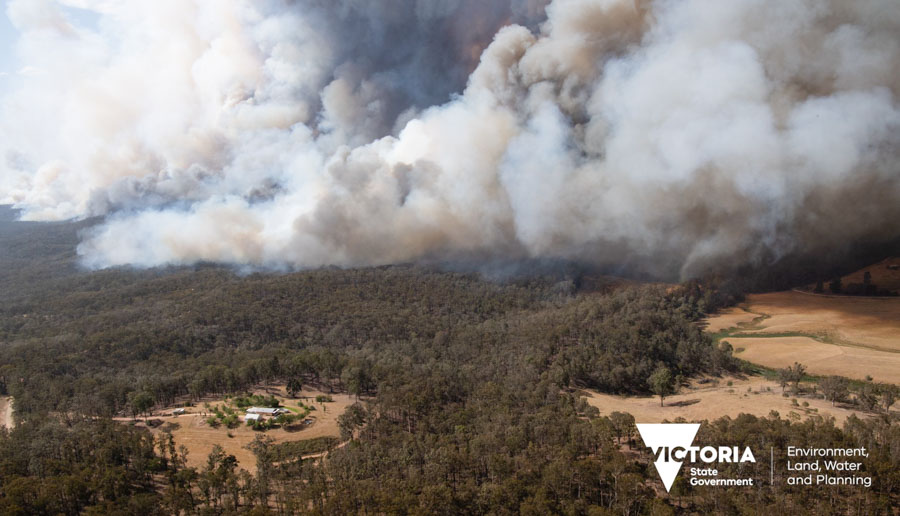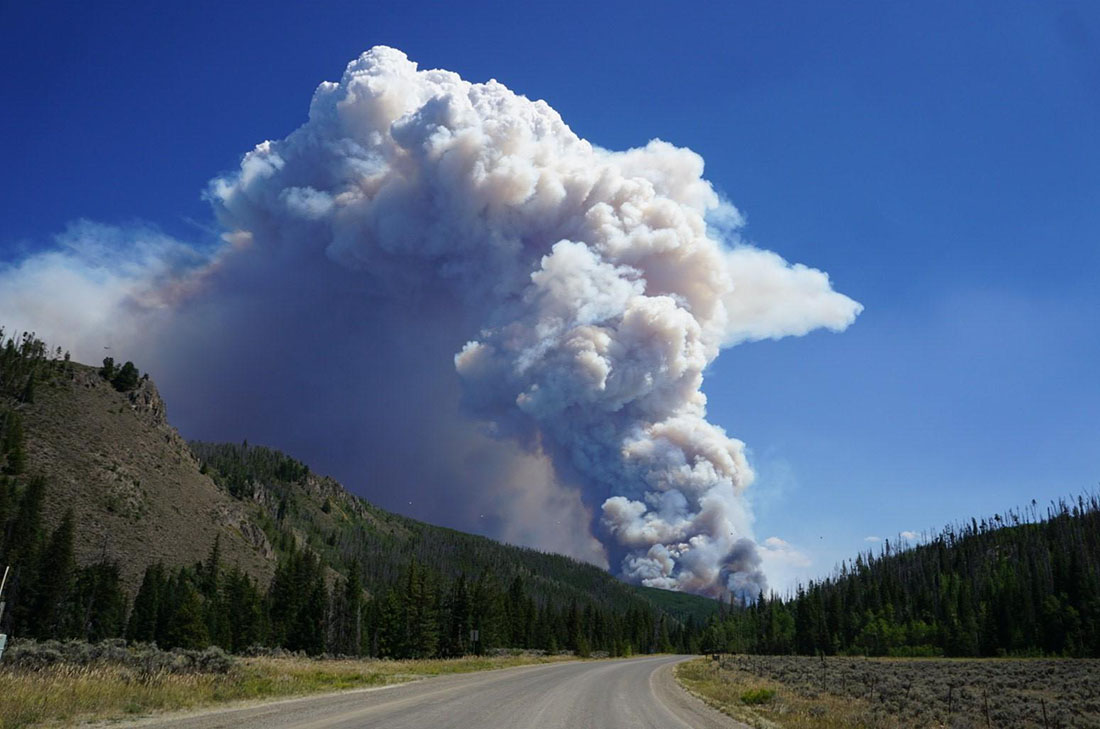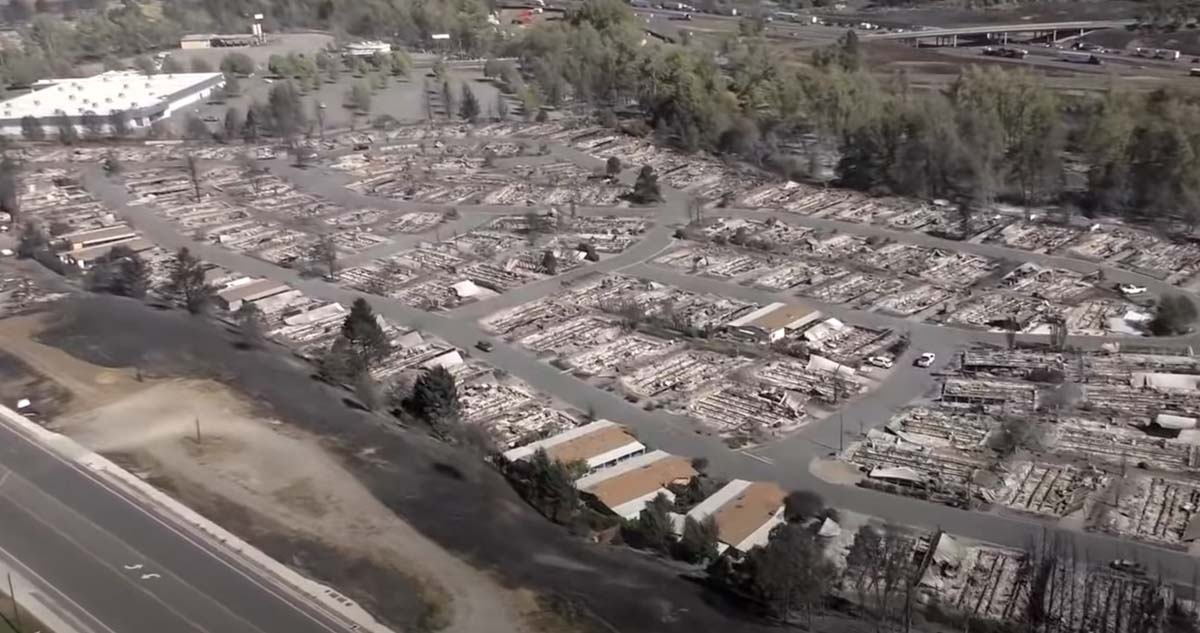
More than 19 million acres in Australia burned in the bushfires of the 2019-2020 season, with seven individual fires exceeding 1 million acres. Researchers who have studied the impacts on the vegetation have determined that the entire ranges of 116 plant species burned along with 90 percent of the ranges of 173 species.
Most of the affected species are are resilient to fire. However, the massive scope of the megafires may leave some ecosystems, particularly the rainforests, susceptible to regeneration failure and landscape-scale decline.
Below are excerpts from a study by Robert C. Godfree, Nunzio Knerr, and Francisco Encinas-Viso, et al., published in Nature Communications February 15, 2021.
Our data indicate that 816 vascular plant species in mainland south-eastern Australia were highly impacted by the Black Summer fires, of which 325 and 173 were >75% and >90% burnt, respectively. All known populations of an estimated 116 species (14% of the total) burnt, which is more than double the number of plant species endemic to the British Isles.
The fires clearly impacted a broad range of species that contribute to both floristic diversity and habitat heterogeneity of forests and woodlands on local to bioregional scales. These characteristics underpin crucial ecosystem services that include biomass production and carbon sequestration, surface-atmosphere interactions and the provision of foods and habitat for animal assemblages, and transformational changes in these processes are likely to be of great importance in the wake of the fires.
Extremely and very range-restricted species experienced fire over an average of 90–95% of their ranges compared with 57–60% for the most widespread species.
Despite the immediate potential impacts on south-eastern Australian vegetation revealed in this study, the ability of many plant communities and species to recover and regenerate after megafires of this scale remain poorly understood. As we have shown, the size of species ranges and the geographic position of the fires both played an important role in determining the diversity and composition of the fire-affected flora. The demographic impact of the fires on specific taxa will also depend on their ability to survive and recover from fire
Our data show that the majority of species affected by the fires are primarily found in sclerophyll forests and woodlands or shrublands and heathlands. Fire is a natural part of these ecosystems and many species are highly fire-adapted with traits such as a soil-stored seed bank, serotinous cones or fruits, smoke- and/or heat-induced seed germination, fire-cued flowering, thick protective basal bark, epicormic buds or underground lignotubers that either provide protection from fire and/or ensure subsequent recovery. Evidence from 270 species in our study confirms this pattern: 251 (93%) across 93 genera are reportedly fire persisters that can resprout or regenerate via propagules after fire, or both.
For widespread endemic species with ranges of 500 km or more the demographic consequences of the 2019-2020 fires are likely unprecedented over at least the past two centuries. While the majority are also likely to be fire-persisters, they are now at risk of novel range-wide threats during the recovery phase such as dieback and inhibited post-fire recovery caused by myrtle rust (Austropuccinia psidii), herbivory of regrowth by invasive animals, and drought. Rainforest taxa capable of surviving fire but unable to compete with subsequent incursion of weeds or sclerophyllous species may be under similar pressure. Obligate seeding woody species such as the ash eucalypts (e.g., Eucalyptus fraxinoides) are likely to be under threat if fires return prior to completion of their typically long sexual maturation periods.
Collectively, there are grounds for cautious optimism that most plant species identified here will recover from all but the most intense fire. Despite this resilience, however, recent evidence from forested ecosystems globally suggest that catastrophic fire events are increasingly catalysing dramatic changes in species composition across large areas. In the most extreme cases tipping points are being reached, resulting in transitions from forest to non-forested vegetation.
Impairment of post-fire regeneration has been specifically linked to thresholds in vapour pressure deficit, soil moisture and maximum surface temperature, as well as fire intensity and seed availability. This is particularly concerning because much of the vegetation affected by the Black Summer fires was already suffering from extreme drought, record high temperatures and patchy canopy dieback prior to the onset of the 2019-2020 fire season. Even in the absence of fire these factors can drive rapid shifts in the dynamics and distribution of forest ecosystems. In regions where the Black Summer fires burnt areas that had only recently recovered from previous fires, increasing fire frequency will be an additional stressor.
From: Godfree, R.C., Knerr, N., Encinas-Viso, F. et al. “Implications of the 2019–2020 megafires for the biogeography and conservation of Australian vegetation.” Nat Commun 12, 1023 (2021). https://doi.org/10.1038/s41467-021-21266-5









